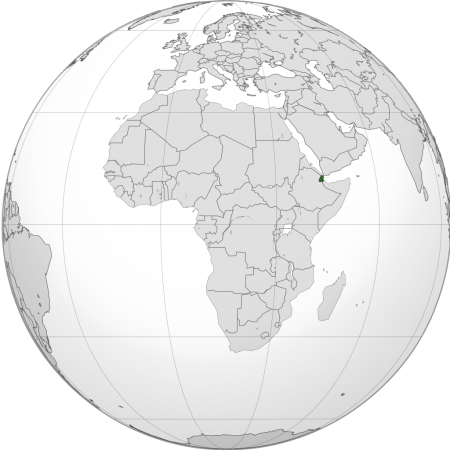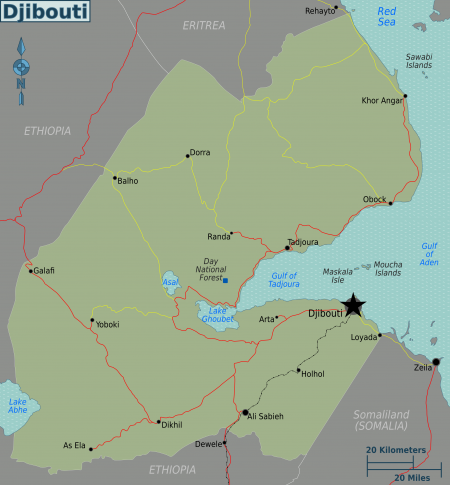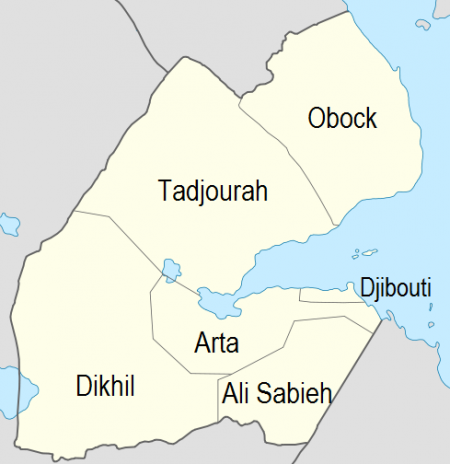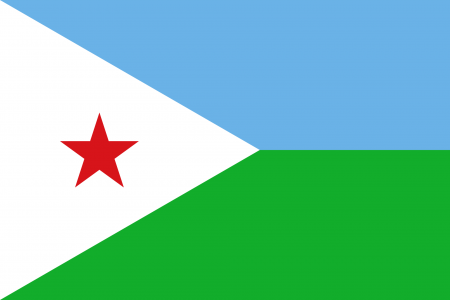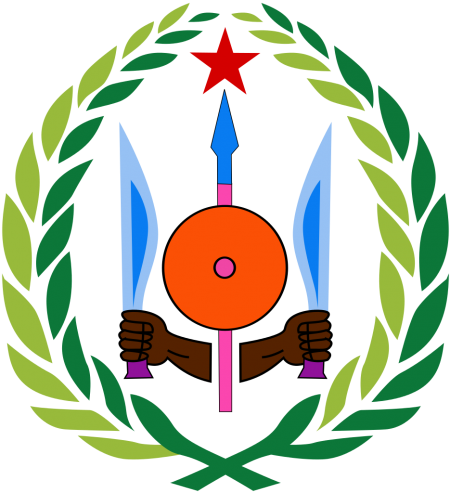Population: 872.932 (2015); urban, 77%
Official Languages: French and Arabic
National Languages: Somali, Afar, Arabic
Religion: Islam
Area: 23,700 sq km
Political System: Republic
GDP: 6.5%
Currency: DJF (Djibouti Franc)
Exchange Rate: 177,200 DJF = $1.
Djibouti is a member of African Union, the Arab League, the Francophonie, Intergovernmental Authority on Development (IGAD) and Organization of Islamic Cooperation (OIC)
A small but important country, Djibouti benefits from its highly strategic location. With access to the Gulf of Aden and the Indian Ocean beyond, the country is a significant gateway to the Horn of Africa and the wider region of East Africa.
Djibouti is reliant on this competitive advantage. Port, logistics and associated services remain the dominant economic activity. The country has limited natural resources, industry or agricultural potential. Nonetheless, it continues to post impressive results. In 2014, the economy achieved a growth rate of nearly 6%, according to estimates from the African Development Bank. While unemployment remains a challenge, this growth figure, coupled with a young and growing population, points to the strong potential of the country.
Geography
Occupying an area of around 23,200 sq km, the country ranks 151st in the world, around the size of the US state of New Jersey. It shares borders with Eritrea, Ethiopia and Somalia and has just over 300 km of coastline along the Red Sea and Gulf of Aden. The country’s landscape is varied. Djibouti has an elevation range exceeding 2000 metres, running from Lac Assal, at 155 metres below sea level, to Moussa Ali, at around 2 km above sea level. The interior plateau is separated from the coastal plain by a central mountain range. Parts of the country are susceptible to seismic and volcanic activity. Almost three-quarters of the land is put to agricultural use, although nearly all of this is pasture land.
Climate
Djibouti has a sub-tropical desert climate. It is hot and arid. The capital, Djibouti city, is one of the warmest and driest cities in the world. Average temperatures here range from 23°C in winter to 42°C in mid-summer. The country receives very little precipitation, with the wettest month, November, receiving on average five days of rain. Unsurprisingly, Djibouti is vulnerable to droughts. However, the country can also suffer from flash flooding, a consequence of cyclonic activity in the Indian Ocean.
With just 0.3 cu km of total renewable water resources, Djibouti is one of the most water-scarce countries in the world. As such, there is little irrigated land in the country. As of 2003, the latest year for which statistics are available, just 10.12 sq km – well under 1% of the available land area in the country – is irrigated. Limited arable land and potable water, as well as increasing desertification, remain significant challenges for the country.
Natural Resources
Despite these difficulties, Djibouti also has some natural advantages. In terms of metals and minerals, it contains deposits of gold, granite, limestone and marble. In terms of energy, moves have been towards petroleum exploration, while there is also potential for geothermal generation. The Ministry of Energy estimates that the country’s geothermal energy potential is in the region of 1000MW. According to the International Renewable Energy Agency, geothermal power plants could reduce the cost of power generation by a margin of nearly $0.20 per KWh. Djibouti is also well placed to become an important energy transit country and downstream location. Neighbouring Ethiopia has recently made new natural gas discoveries, and has refocused efforts on exploiting existing reserves. In September 2015 the two countries signed a $1.55bn deal for a new 550-km pipeline, known as the Horn of Africa Pipeline, transporting fuel between central Ethiopia and the Djibouti coast, including a 950,000-barrel storage capacity in Damerjog.
Population
There are less than 1m Djiboutians. According to the World Bank estimates, the population reached 876,200 in 2014. The majority, more than 500,000 people, live in the capital, Djibouti city. As this suggests, the country has a high urbanisation rate, with more than three-quarters of the population residing in urban centres. The population growth rate of 2.2% as of 2014 is high by developed country standards, but unexceptional for the developing world. Djibouti is the 40th-fastest-growing country globally.
Djibouti is also a young country. More than half of the population is under the age of 25. This leads to a dependency ratio of 58.5%. However, in the next decade the youth cohort will transition to the working age population, and with the demographic growth rate likely to slow, the dependency ratio should decline to the benefit of the country. This will provide the potential for a substantial labour force, opportunities for tax revenue growth and a reduction in welfare expenditure. As such, the demographic dynamics of the country are favourable for strong economic growth.
Language & Religion
The two official languages are French and Arabic. However, with the ethnic composition of the country consisting mostly of Somalis (60%) and Afars (35%), these groups’ languages are also widely spoken. There are also small populations of Arabs, French, Ethiopians and Italians. Djibouti is a predominantly Islamic country, with 94% of citizens describing themselves as Muslim and 6% as Christian.
Early History
Archaeological finds, from pottery to rock art, point to Djibouti’s distinguished antiquity. The area that makes up the modern state has been inhabited since at least Neolithic times, while animal bones found at Asa Koma suggest the use of domesticated cattle for 3500 years. In antiquity, Djibouti is believed to have been part of the area known to Egyptians as Punt, a trading territory that stretched from the Red Sea Sudanese coast to the northern reaches of Somalia, taking in Eritrea. Given its proximity to the Arabian Peninsula across the Gulf of Aden, it is perhaps unsurprising that Djibouti was introduced to Islam within a few years of the religion’s genesis. The territory was ruled through a series of sultanates.
Independence
However, in the 19th century, as trade and competition between European powers fuelled their imperial ambitions, the territory became of particular interest to foreign states. While Britain developed an interest in Egypt and Sudan to the north, Yemen to the east and Somalia to the south, France established a presence in the territory that would later become Djibouti.
In 1884-85, French involvement was formalised with the creation of the protectorates of Obock and Tadjoura, subsequently known as French Somaliland. The French eventually moved the administrative capital of these areas to Djibouti, in 1896, and soon afterwards began construction of a narrow-gauge railway, in 1898.
Following the end of the Second World War, the French also began to develop stronger political mechanisms in the territory. Greater autonomy arrived in 1957 with the creation of a territorial assembly and a local executive council that advised the French-appointed governor.
In 1958, the voters of French Somaliland chose to become a French overseas territory and therefore were granted representation in the French National Assembly. Almost a decade later, in a 1967 referendum, the country once again voted to remain part of France and was renamed the Territory of the Afars and the Issas.
Declaring independence in 1977, the country officially took the name the Republic of Djibouti. For much of its independence, President Hassan Gouled Aptidon ruled the country as the representative of the People’s Progress Assembly (RPP). Multi-party politics was introduced in 1992, but the RPP has remained ascendant. In 1999 Ismaïl Omar Guelleh, also of the RPP, became president, extending the electoral streak of the party.

